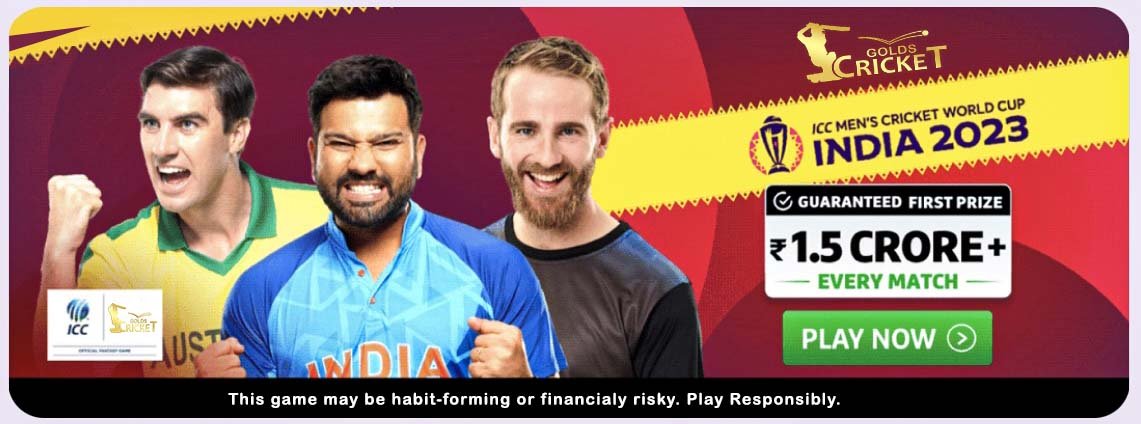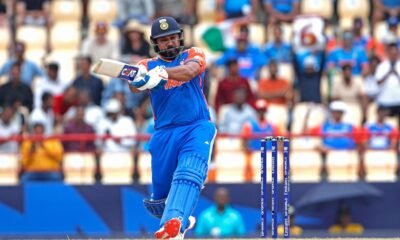Cricket
CWC 2023: Many shades of the Indian cricket fan | Cricket
[ad_1]
Even by the standards of the ugly Indian fan it was gratuitous. As Bangladesh raced to 90 for none at Pune, Shoaib Ali was in good voice. Shoaib is the superfan you have seen on television, in yellow-and-black striped body paint or costume, flag in one hand, stuffed tiger in the other.

As India began to assert their supremacy on the field, the Indian fans began crowding Shoaib. They jostled him with the “Nagin” dance (which, as a provocation device, deserves an oral history). They shouted “Jai Shri Ram” in his face. At the end of the game, where the only suspense was a will-he-won’t-he around Virat Kohli’s century, some Indian fans asked Shoaib for his tiger. Uncertain about their motives, he handed it to them. This next part you may have seen too, because it went viral on social media. They tossed it around among themselves, beat it about, literally knocked the stuffing out of it. Then they threw the mutilated toy back at Shoaib. India had won, now so had they.
Shoaib is a mechanic. When he first started travelling, he would scout around for garages near the venue to stay the night. There were times that far, far away from home he did not have the fare to return and would catch odd jobs in order to. Some of these details I know because I met him at the Wankhede last week, as he witnessed another Bangladesh defeat. He did not have his tiger. He thought he would get it stuffed and stitched up, but then noticed that one leg was missing altogether.
That night in Pune, he told me, he did not get a moment’s sleep. Although several Indians had consoled him in the aftermath the pain had not fully left him. Never on his visits to India, or anywhere else, had he endured such a thing. Indeed, something remarkable had happened to him just the day before that match, when at the stadium gate he heard a voice calling him. “Ali bhai,” it said. “Ali bhai” – again. He saw a hand stretched out of a car. It was Rohit Sharma’s. He was a diehard Rohit fan. That the Indian captain had remembered him and reached out to him was overwhelming.
This was not the only time in the tournament that the cricketers’ conduct has contrasted with the fans’. On the field at Ahmedabad after the Pakistan game, Kohli gifted Babar Azam a signed jersey. But all through the match Babar had received from a lakh-plus Indians only boos.
The previous day, at the gates of the Narendra Modi Stadium, I watched “Chicago Chacha” Mohammad Bashir, kitted out in his bespoke kurta, half star-and-crescent, half tricolour, the words “Jis desh mein Gangha [sic] behti hai us desh ki meri biwi hai” running across, in a crowd of television cameras and a group of civilians. Chicago Chacha is Pakistani American, his wife is Indian. I wondered how this mascot of friendship felt about someone bellowing “Jai Shri Ram” into his ear, while somebody else blew a conch in the other, needling him to repeat the chant.
The train to Mumbai after the Ahmedabad match was full of cricket travellers. Sat next to me was a 26-year-old fan Ajinkya. It was the first time he had ever watched India at the ground. It could not have gone better. He had wanted to be a part of history, he told me. Blending in with the sea of blue, himself in blue, that was an incredible feeling. Ajinkya too had been disturbed by some of what he saw: the relentless booing of Babar, the spectators who declared they would not stand for the Pakistani anthem, the hustling of the two Pakistani supporters from Dubai, the videos that emerged afterwards of “Jai Shri Ram” chants at Pakistani players as they went up the tunnel. He did not know that visas had kept Pakistani fans and media down to negligible. He did not think that was the right thing to do.
Ajinkya, while working his corporate job, was studying for the Territorial Army exams. Not so easy, therefore, to paint him an “anti-national”. Just that his values included decency.
His friend Sudarshan was more hard-nosed about fan conduct. He had seen the “baap kaun hai” video of Pakistani fans heckling Indian players in England in 2017, so some response was to be expected. The atmosphere in Ahmedabad was the second-best he’d ever experienced. The best was Sachin Tendulkar’s final Test, when at the end of the famous speech “everybody in the stadium was crying, kids, old people, everyone.” A comparable moment to him in Ahmedabad was when the DJ played Vande Mataram as the match finished and the whole arena sang along.
But to have a taste of this experience was not easy. Ajinkya and Sudarshan’s group of four had scrounged about for Mastercards that would allow them a head start with the booking, stayed logged in for hours on end across days, accepted tickets eventually in different stands, made three sets of train reservations and one set of bus bookings so as to leave nothing to chance, and narrowly averted an online hotel-booking scam after having been reeled in.
I have detailed this to give a representative sense of a fan’s journey, at the end of which must lie deliverance. Indian cricket, we know, is more than sport. It is, among other things, the most euphoric shot of nationalism a consumer can buy.
The two non-India matches last week at the Wankhede – not always an enlightened lot, we have seen during the racial taunts of Andrew Symonds and the chants about Vinod Kambli’s colour – saw strong turnouts of spectators who immersed themselves in neutral cricket. In Bengaluru a policeman stopped a Pakistani fan from cheering his team on, whereas in Chennai Indian fans of Pakistani cricketers felt free to wear Babar jerseys. At the end of that match, Afghanistan’s players, having defeated Pakistan, took a victory lap around the ground, as Pakistan’s had done in 1999 after defeating India in a Test match.
Although we often do, it is not sensible to consider the Indian crowd a single entity. There are within it those that are a wonderful part of sport, and they keep a crowd from becoming a mob.
[ad_2]


















